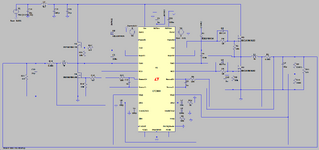cupoftea
Advanced Member level 6

Hi,
We do Synch Buck of 24vin, 13v5 out 15A out, 450kHz.
We use 60V SON5x6mm FETs.
60V FET, trr=35ns (50A, di/dt = 100A/us)
They have reverse recovery of some 40ns.
Because the datasheets dont show the dynamics of the FET reverse recovery, it is impossible for us to calculate what power will be dissipated overall, due to the reverse recovery.
Also, simulators "dont do reverse recovery", (at least not accurately) and so no estimate can be gotten from that.
May you give an estimate?
We do Synch Buck of 24vin, 13v5 out 15A out, 450kHz.
We use 60V SON5x6mm FETs.
60V FET, trr=35ns (50A, di/dt = 100A/us)
They have reverse recovery of some 40ns.
Because the datasheets dont show the dynamics of the FET reverse recovery, it is impossible for us to calculate what power will be dissipated overall, due to the reverse recovery.
Also, simulators "dont do reverse recovery", (at least not accurately) and so no estimate can be gotten from that.
May you give an estimate?
Attachments
Last edited:


